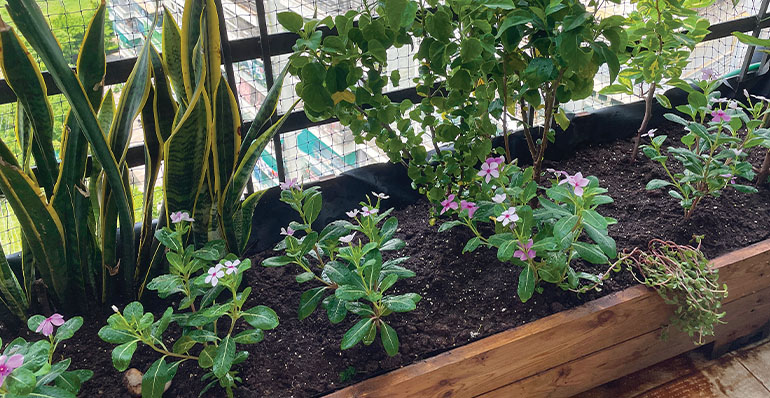Grow your own dinner: Apartment-friendly gardening tips

In the bustling lives of urban dwellers, creating a green oasis in an apartment or a dorm room can be a challenge. Students looking to save dollars on groceries by growing their own herbs and vegetables at home might think a home garden isn’t possible, but there is a way. Balconies, for example, offer a slice of tranquillity and a connection to nature, and simply having decent sunlight indoors can help aid in the growth of plant life in your apartment.
Here we dive into practical gardening tips tailored for different living spaces, ensuring everyone can enjoy the pleasure of growing their own green haven.
The key to a thriving garden lies in starting small and understanding the basics.”
If you’re lucky enough to live somewhere with an outdoor space, an outdoor garden is the perfect place to try growing your own vegetables. This will give you the most space to work with and also ensure optimal seasonal conditions for whatever you’re growing.
If you’re living in an apartment, and working with limited space, try starting with small pots of herbs. Herbs like mint, cilantro, and dill are great for growing indoors. Just make sure you leave your pots by a bright windowsill to give your herbs the best chance at soaking up the sunlight.
Access to a balcony is a gamechanger when it comes to home gardening. With this additional outdoor space, your growing options expand significantly. Balconies are ideal for growing greens like kale and spinach, and even sweet, delicious strawberries. Local gardener, Emma Rodriguez transformed her balcony into a green oasis.
“Don’t underestimate the power of vertical gardening, it’s a game changer for small spaces,” she said.
Regardless of your situation, there are some key factors to keep in mind when it comes to home gardening. Understanding your soil type and its needs is crucial. Amend your soil based on test results to ensure it has the right pH and nutrient balance for the plants you wish to grow. The best type of soil for a vegetable garden, for example, is loamy soil, as it promotes the growth of almost all types of vegetables.
Consider the sun, light, shade, and moisture levels in different parts of your home. Plant accordingly to ensure each plant gets its ideal conditions.
Try practices like container gardening, vertical gardening, and indoor plants to ensure you find success in your home gardening efforts. Trying to grow fruits and vegetables that are not destined for balconies or windowsills will only lead to disappointment.
Lastly, invest in basic tools and watering. Beginners should consider investing in a sturdy trowel, gardening gloves, a watering can, and if you have space, a good quality shovel and rake. Different fruits and vegetables require different amounts of water; some thrive in drier soil, while others need constant moisture. A simple way to keep track of your vegetables’ watering needs is to check the top inch of the soil. If it’s dry, it’s time to water. This simple check can prevent over-watering, which is often more detrimental than under-watering.
For beginners, whether you live in a townhouse or apartment building, embarking on a gardening journey can be rewarding yet daunting. The key to a thriving garden lies in starting small and understanding the basics.

